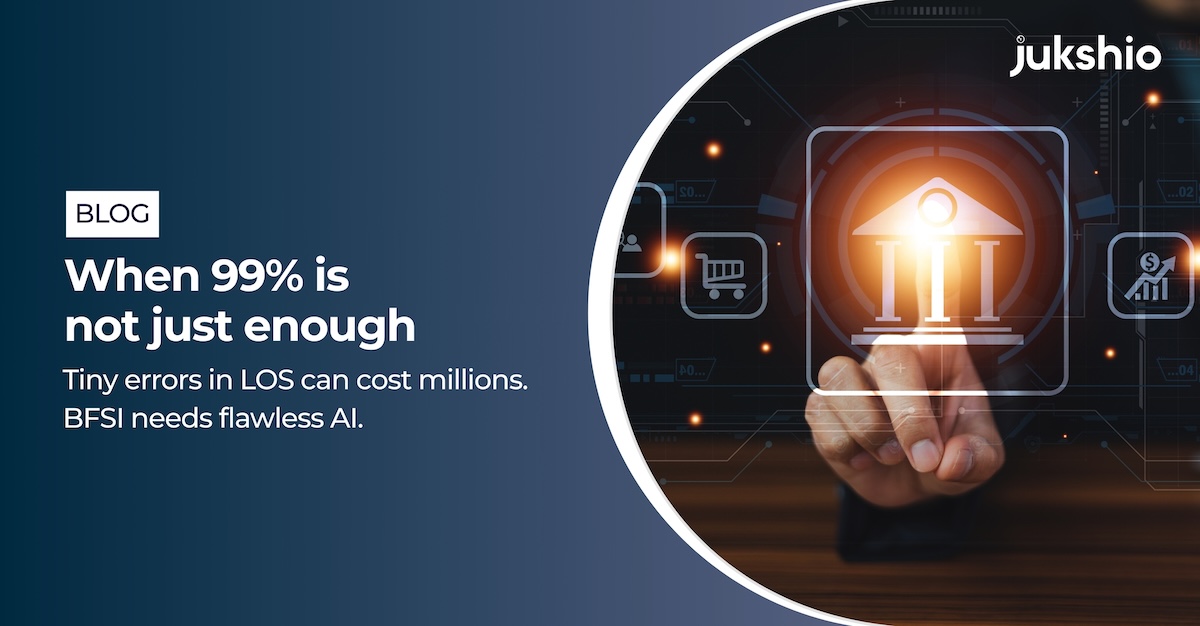When 1% Error Becomes a $5.9 Million Problem

Financial institutions process millions of loan decisions every day. Most are rapidly adopting AI to improve speed and efficiency—often celebrating 97–99% accuracy rates.
But here’s the question few ask…
What happens when you automate that 1% error at machine speed?
The hard truth is that AI doesn’t just inherit imperfections - it amplifies them. That 1% “margin of error” isn’t a rounding issue; it’s tens of thousands of wrong decisions every single day.
Unlike manual errors that surface through manager feedback or review, AI errors replicate silently across systems—embedding themselves into portfolios until the damage becomes visible and costly.
In BFSI, where trust is the real currency, 1% inaccuracy isn’t a tolerance—it’s an existential threat. According to IBM, the average cost of a data or decision error in financial services exceeds $5.9 million per incident, and that number is rising fast in digital lending markets like India. By the time it’s detected, the exposure is already systemic.
Consider this: a human underwriter processing 20 applications a day at 99% accuracy makes one mistake every five days—manageable and correctable. But an AI system processing 10,000 applications daily at the same rate makes 100 mistakes every day, 500 per week, and 2,000 per month. Same accuracy. Radically different impact.
Now layer in compounding. If your fraud model, data validation model, and pricing model each operate at 99% accuracy, your overall system accuracy drops to 97%. Across 50,000 daily applications, that’s 1,500 flawed decisions—every single day.
By the time quarterly reviews detect the drift, thousands of loans are already mispriced or misclassified.
The solution isn’t just more AI—it’s better-architected AI. Systems designed for 100% precision at scale. Multi-layer validation that cross-checks income, deposits, and tax data in real time. Ensemble models require consensus before a decision is finalized. Continuous monitoring that detects anomalies within hours, not quarters.
Because the truth is simple: BFSI cannot tolerate small errors. Trust, once lost, isn’t renewable. And, at $5.9 million lost per 1% error incident is catastrophic.
AI’s next frontier is 100% flawless orchestration.
What do you think—should financial institutions be aiming for 100% accuracy, and 100% accountability in how they deploy AI?




.jpg)
.jpg)

.png)

